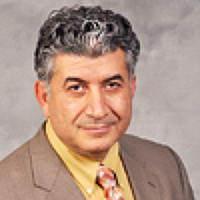Light beams, photons, axions
Published on: 2nd August, 2022
The question of the interaction of light with small particles, with molecules, atoms in gases, in liquids has been considered by many authors in the scientific literature. As a rule, this is elastic, Raman, or Rayleigh scattering. The frequency of the scattered light in the first case is the same as that of the incident, and in cases 2 and 3, the spectrum of scattered radiation is enriched with the corresponding components. The subject of this work is the interaction between each other in the medium of two coherent light beams.
A rare variant of the radial artery was discovered during a pseudoaneurysm of the brachial artery in a hemodialysis patient
Published on: 2nd August, 2022
The radial artery shows great anatomical variability with respect to its origin [1]. Generally, its origin is located in the cubital fossa at the level of the neck of the radius [2]. However, the artery may have a high origin from the brachial artery or even the axillary artery [1].
VEP visual acuity in children with cortical visual impairment
Published on: 2nd August, 2022
Given improvements in neonatal care and the increased survival rates of infants born pre-term, Cortical Visual Impairment (CVI) is now the leading cause of visual impairment (VI) in the developed world. In this study, Step VEPS, transient VEPS and Vernier Sweep VEPs all demonstrated unbiased relationships with Preferential looking (PL) cards over the whole range of Visual Acuity (VA) in children with CVI, allowing equations for clinical use to be derived. The results also suggested that a slower, vernier steady-state stimulus of 80% contrast and presented with the Step VEP algorithm could further improve VA agreement with PL and optimise developmental sensitivity. An eye tracking device has proved very useful in the clinical assessment of this cohort. It is also now known that children can have good VA and CVI, and that sweep VEPS can highlight higher processing deficits. As well as negative findings, compensatory neuroplasticity is thought to occur during maturation and it is now realistic to study this mechanism, and other age-related changes across VI with functional tests and neuroimaging (including VEPS). A cross-sectional study of adults would highlight CVI’s ultimate functional limitations.
Teledentistry and Digital Therapeutics (DTx) for dentistry
Published on: 5th August, 2022
Due to the global pandemic spread of COVID-19, the medical field has experienced many changes [1]. One of the main changes is the attention to Telemedicine (Digital Medicine), which is a part of Digital Health. The combination of ‘Digital’ and ‘Dentistry’ can be awkward because dental treatment is often conducted face-to-face with clinical treatment, but it is planned to proceed with the inevitable flow of the times [2,3]. In addition, Digital therapeutics (DTx), a part of digital dentistry, is a narrower concept and has an evidence-based effect on diseases. This article contains opinions on the concept and current status of Teledentistry and the application of DTx [4].
The protective potential of Carbonic Anhydrase VI (CA VI) against tooth decay in children: A systematic review of the literature
Published on: 2nd August, 2022
Carbonic anhydrase VI (CA VI) catalyzes the reversible hydration of carbon dioxide in saliva with possible pH regulation, taste perception, and tooth formation effects. Objective: The aim of this work was to undertake a systematic review regarding the relationship between the expression/activity of CA VI in saliva and in dental biofilm and caries experience. Study design: Five databases were searched until February 2020. The composition was based on the PRISMA statement and on the PICOS model. First author, year, subject characteristics, analysis performed, outcome, measures & variables were extracted. The used terms were “carbonic anhydrase VI”, “saliva”, “dental biofilm” and “dental caries”.Results: Five studies in the English language were selected for this systematic review and the main discussed topics were the expression/activity of CA VI in saliva and/or in the dental biofilm of children, and its relationship with dental caries. Conclusion: Salivary carbonic anhydrase plays an important role in the caries dynamics process since there is an association between the expression/activity of CA VI in saliva and the experience of caries. Thus, this protein can predict the risk of dental caries in young patients.
Environmental impact assessment of demolition of a building in India-A case study
Published on: 3rd August, 2022
Buildings are demolished, when they outlived their service life, become structurally/functionally unfit, or have been built illegally. In India, an RCC framed, 40-storied high-rise building, with a built-up area of about 75,000 sqm, built without relevant approvals along with lots of violations of building bye-laws, has been demolished. There is nothing new in this demolition process, but its effect on the environment is unavailable. A study has been conducted to understand the environmental impact of this demolition. Based on the main primary construction materials, the embodied energy of this demolished building has been computed as 7.07 GJ/sqm.The civil construction cost of the building was found to be about INR 200 Crores (USD 27 million, assuming a conversion rate of 1 USD 75 INR in the year 2022). Expected GHGs emissions corresponding to this embodied energy were estimated as 42.42 × 103 MT. Energy in the demolition of the building has been computed to be about 8.7 GJ/sqm. The situation, in which this building can be retrofitted and made compliant with local building bye-laws, has been analyzed for its environmental impact.
Efficiency of different methods for calculating the mechanized tunnels face pressure considering an earth pressure balance
Published on: 2nd August, 2022
OCLC Number/Unique Identifier: 9579644518
Different methods for calculating and estimating a safe face pressure were proposed by researchers, which have some advantages and disadvantages. In each of these methods, some related parameters such as soil geotechnical parameters, dimensions of the tunnel, and geological conditions are used. In these methods, using a series of mathematical or empirical functions, the face pressure is calculated. In this study, the face displacements were obtained using the finite difference numerical FLAC3D, the COB (Netherlands Underground Science Center) empirical, and the Leca and Dormieux (1990) analytical methods. The impact of the COB method on different ground stiffnesses is studied and evaluated. The reference case of this research is the Tehran Metro Line 6 tunnel (excavation radius: 4.6 m).
Research question approach in the study of neonatal sepsis
Published on: 1st August, 2022
Neonatal sepsis is a systemic infection that causes high morbidity and mortality rates in newborns during the first month of life. Although there is abundant literature on the subject, it remains a fundamental public health problem due to its high prevalence in underdeveloped countries. This article aims to highlight the importance of the approach in investigating neonatal sepsis using causality research questions, which generate knowledge to promote better care and reduce the complications associated with neonatal sepsis in newborns.
What, how and when should we instruct mothers about neonatal jaundice
Published on: 30th July, 2022
OCLC Number/Unique Identifier: 9579209925
Most parents in affluent countries receive information about neonatal jaundice from instructional pamphlets and/or verbally from nurses before discharge. Predischarge protocols, content and delivery of information for parents, and screening for jaundice vary among hospitals. Newborns are usually screened either visually or with a transcutaneous monitor to estimate the intensity of jaundice. The timing of follow-up is guided by the newborn’s clinical status, age at discharge and risk of developing significant hyperbilirubinemia based on an hour-specific bilirubin level [1,2].
Sanitary update on wheat in Argentina
Published on: 3rd August, 2022
OCLC Number/Unique Identifier: 9586045459
The wheat production (Triticum aestivum L.) in Argentina is the third in importance after soybeans and corn (source: BCR).




